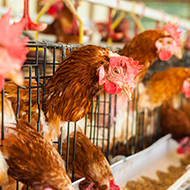Lost echidna rediscovered in Indonesia
“Attenborough's long-beaked echidna has the spines of a hedgehog, the snout of an anteater, and the feet of a mole” – Dr James Kempton.
A species of echidna, named after Sir David Attenborough, has been seen by scientists for the first time in more than 60 years.
The rare egg-laying mammal was captured on film during a scientific expedition to the Cyclops Mountains in Indonesia’s Papua province.
The last recorded sighting of the species had been in 1961.
During the four-week expedition the research team, which included scientists from the University of Oxford, set more than 80 remote camera traps.
Although they discovered other species, including a honeyeater bird which had not been seen since 2008 and a new genus of tree-dwelling shrimp, it wasn’t until the final day that one of their cameras recorded the echidna.
The photographs are the first ever taken of the species, Zaglossus attenboroughi, which is classified as critically endangered on the IUCN Red List of Threatened Species.
Dr James Kempton, who led the expedition, said: “Attenborough's long-beaked echidna has the spines of a hedgehog, the snout of an anteater, and the feet of a mole. Because of its hybrid appearance, it shares its name with a creature of Greek mythology that is half human, half serpent.
“The reason it appears so unlike other mammals is because it is a member of the monotremes – an egg-laying group that separated from the rest of the mammal tree-of-life about 200 million years ago.”
The species is not known to live outside the Cyclops Mountains. To reach the locations where they could find it, the scientists worked with Indonesian NGO Yayasan Pelayanan Papua Nenda to gain the support of the local community in the village of Yongsu Sapari.
Dr Kempton said: “The trust between us was the bedrock of our success because they shared with us the knowledge to navigate these treacherous mountains, and even allowed us to research on lands that have never before felt the tread of human feet.”
Image © Cyclops Expedition



 An Avian Influenza Prevention Zone (AIPZ) has been introduced across Wales.
An Avian Influenza Prevention Zone (AIPZ) has been introduced across Wales.